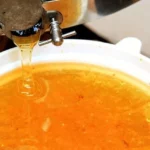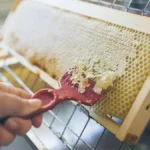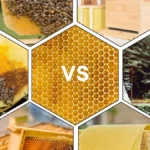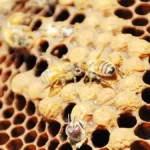When we produce a little bit of honey for ourselves, it is very different from commercial beekeeping and we can aim to produce safer, cleaner honey and wax. When we look at how to extract honey from comb at home, we will keep these advantages in mind. Let us unpack this.
How Commercial Honey Is Produced and Why This Affects Its Taste
Commercial honey is extracted by centrifugal extraction. We take frames and remove the capping wax, and then place these frames in an extractor. The extractor spins the honey, and the centrifugal force causes the honey to leave the combs where it then flies through the air as very small droplets. These collect on the side of the extractor and run down to the base and out a valve into an awaiting bank of strains, maybe filters, and then a settling tank.
The effect of making very small drops of honey increases the surface area to volume ratio of the honey exposed to air. In other words, if you imagine a cell of honeycomb, it has no contact with air. This means that the flavor compounds in the honey don’t leave the honey. If we now remove the wax capping and spin that honey out, it forms little drops. These little drops fly through the air and have a large surface and small volume. This means that the rate of flavor loss in the air is very high.
When we extract honey, the honey room starts to smell strongly of honey and the honey loses a lot of its flavor. This is why comb honey will always have more flavor than honey that has been spun! If the extracted honey has also been heated and filtered it loses even more flavor and goodness.
Learn more about: What Is The Difference Between Raw Honey and Pure Honey?
How To Extract Honey From Comb At Home To Achieve Maximum Flavor Retention
There are many ways to extract honey. For home production, we want to extract combs in such a way as to maximize the health benefits for us, and also the flavor and quality of our honey. We can explore a few options for this:
Option 1: Comb Honey
Comb honey – just tastes better than any other honey. This is because many of the flavor compounds in honey are actually lipophilic – they are attracted to fat – and this means they dissolve in the wax. When you chew comb honey, the flavor compounds in the wax come out into your mouth and contribute to the floral notes you detect in the honey.
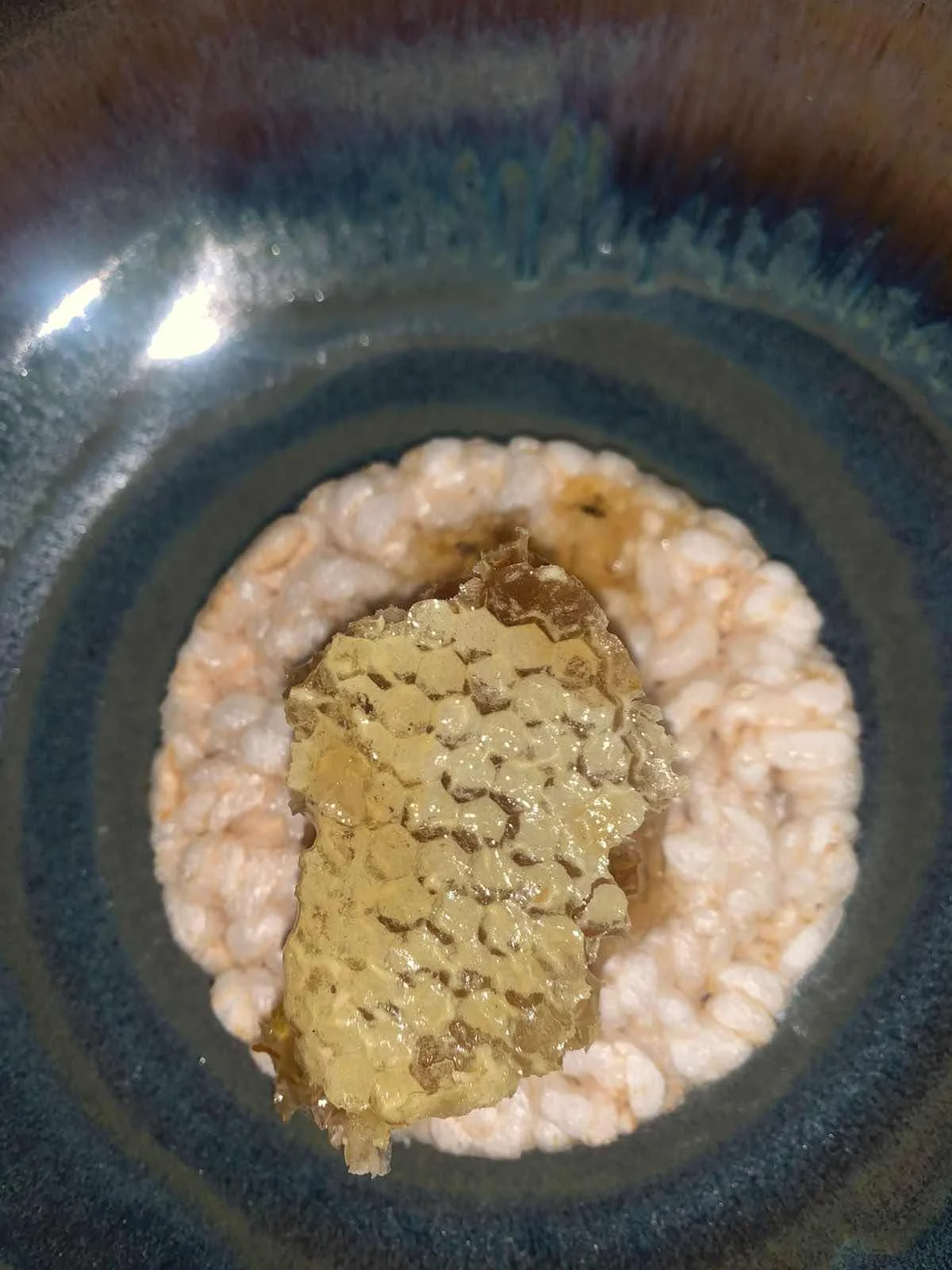


Note the comb in the above picture on the left is a white comb – this means there is an air gap below the wax cap. This airgap fills with delicious floral notes. When you crush the honeycomb onto your bread/rice cake/something else the floral notes are released into the honey as bubbles and you will taste them. This tastes so much better than extracted honey ever will! The wax is healthy and despite everything you read, parts of it are digested and are very very good for you!
Option 2: Crush The Comb and Drain It
This is how we have separated honey since times when we could not record what we did. So that is at least 10 000 years ago. If we look at Africa, there are some records that suggest that we have been eating honey for a lot longer. I have watched traditional honeycomb extraction in the Congo and Zambian forests, and the age-old method is simple – you crush the combs in a basket and let the honey drain through. The waxy combs are then taken, mixed with water, and turned to mead. The honey is consumed as honey.
For us to adapt this age-old method to our kitchen you will need a colander, a funnel that this fits into and a tub to collect the honey. If you have a large amount of comb, you can use a big colander and a bucket.
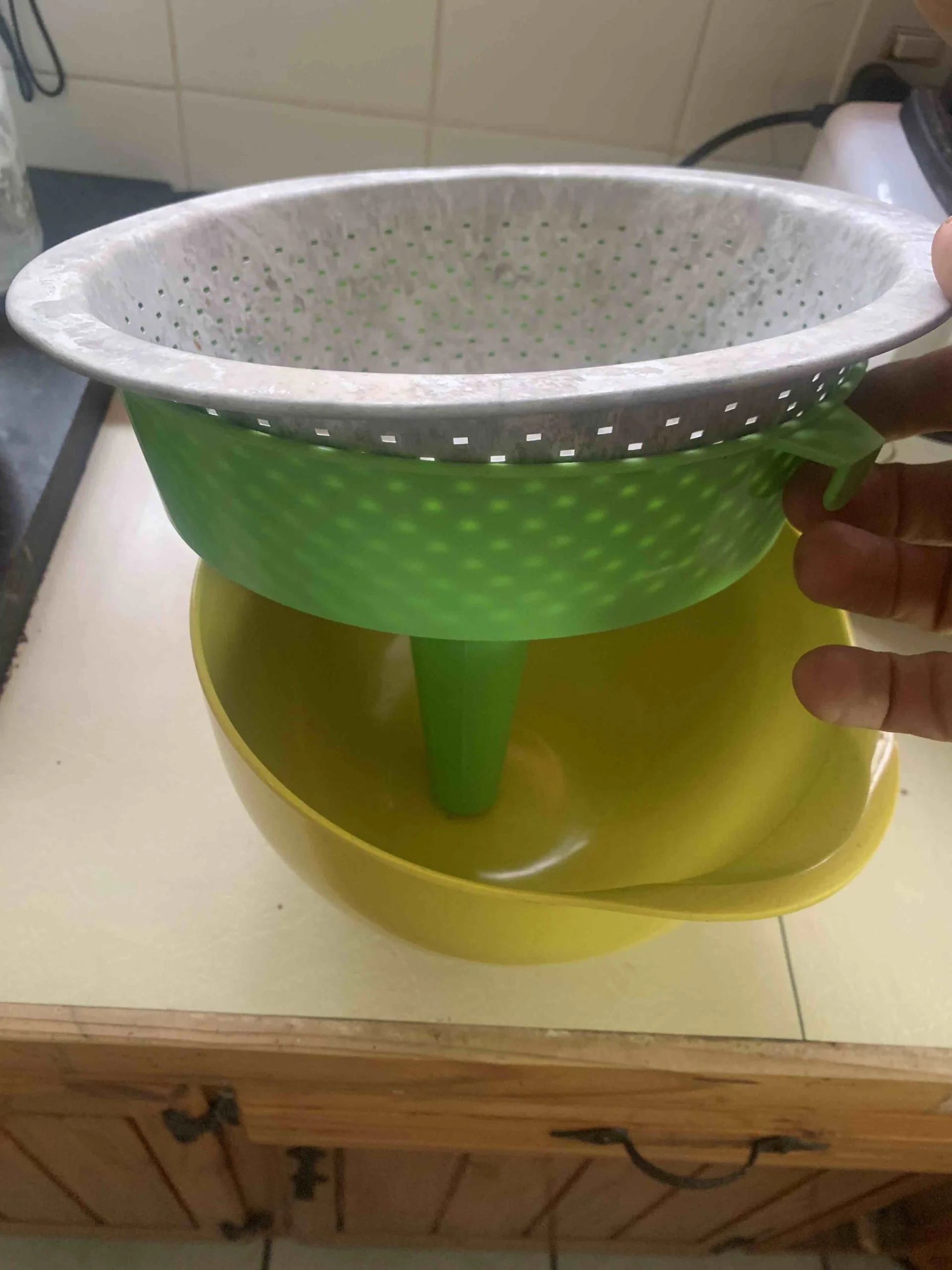

For little bits of comb, use a colander funnel and tub such as that pictured on the left. If you have more comb use the bucked and colander method on the right.

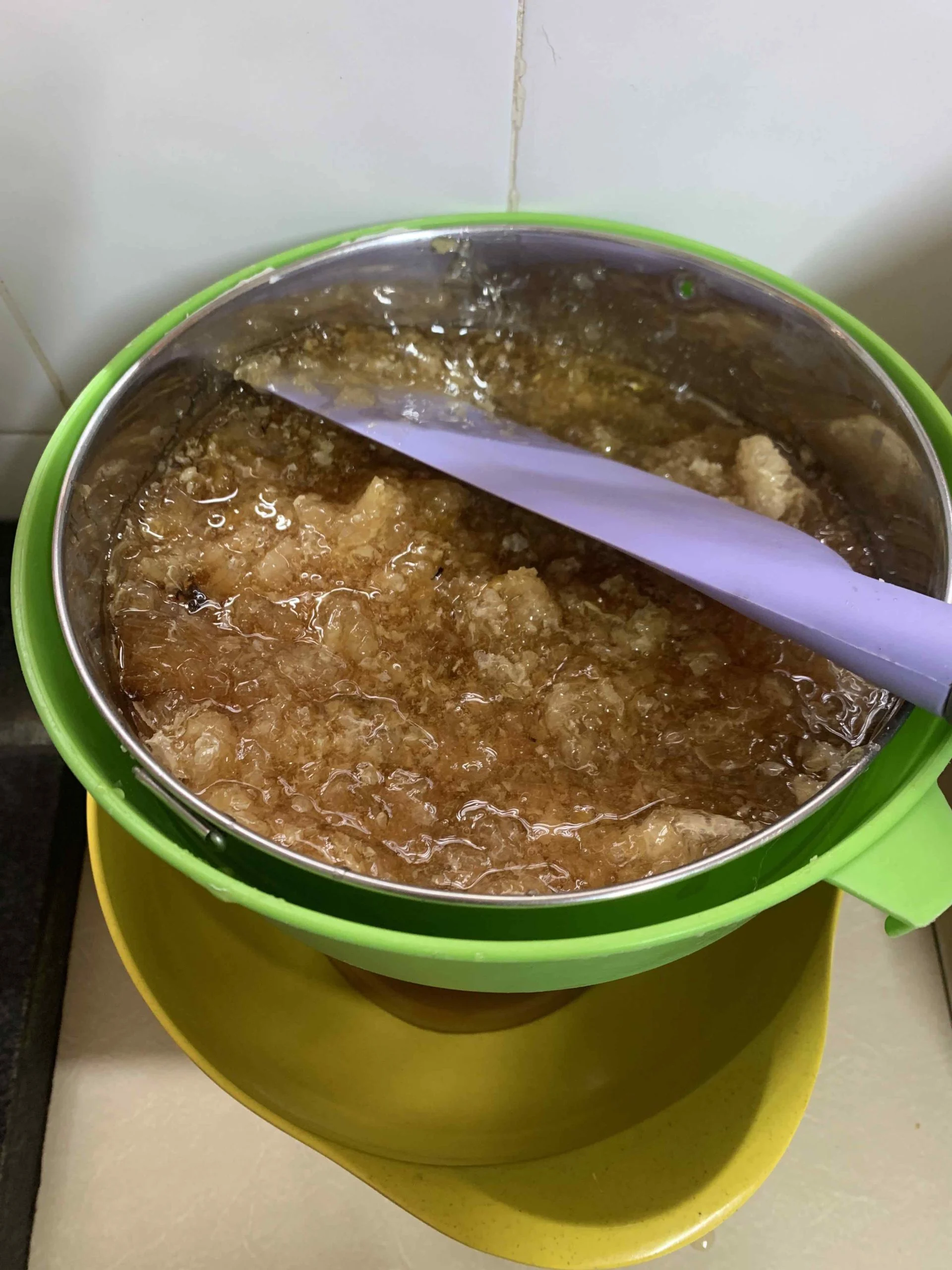
Place the combs in the sieve or colander and then crush the combs. The honey will drain through the funnel into the container.

The strained honey will have some wax particles. Pour the honey into a jar and put some plastic cling film on top of the honey. The gunk in the honey will float up and stick to the plastic film and you can remove this after a day or two. If you are worried about using plastic film (I am) you can use a product such as this.
Now you know how to extract honey from comb at home, the next thing we need to do is to look at a few common questions I get about types of comb to extract honey from.
Is It Safe To Eat Honey From The Brood Box?
Yes. Well, as safe as is possible. Brood comb tends to be an older comb, and beeswax does accumulate toxins such as pesticides over time. But, in general, the comb from the brood box is safe for extracting honey from. It will however produce small brown particles which can make the honey look dirty. These will float to the surface with time and can be removed.
What Do We Do If There Is Brood In The Comb?
Cut the brood out. Put it to one side and process the rest of the comb. If you mash brood into the honey it will make the honey go rancid with time.
If the brood is in combs that are white or yellow, you can take the brood and place it in a pan with a bit of garlic, butter/olive oil, and some vegetables and fry it to make a great stir fry. Most people will think it is a very small shrimp. If you fry the brood till it is crispy it is actually quite delicious. Areas in the world where the brood is consumed as food have incredibly low sales for Viagra – connect the dots.
If the brood is in brown comb feed it to your chickens or you can place it outside on the bird feeder. Most grub-eating birds will eat the brood. (Here is an interesting article on birds that parasitize other birds. My father, Dr. Jim Cambray, has over the years documented the bee brood-eating bird the lesser honeyguide. Here some of his pictures are featured in an article on brood parasites)
Also read: How to Pasteurize Honey at Home: A Simple Guide
I hope this article has helped you understand how to extract honey from a comb at home. This will allow you to produce the best-tasting honey! You can even keep honey from different combs separate this way. Believe it or not, sometimes you can have ten combs in a hive that each tastes different! If you enjoyed this please share.
Homestead Beekeeper Honey Extraction FAQs
What is the best way to extract honey at home without equipment?
- The crush and drain method is the most accessible and effective way to extract honey at home. You crush the honeycomb in a colander or sieve and let the honey drain into a container. This method is simple and maintains the honey’s flavor.
Can I eat honey directly from the comb?
- Yes, comb honey is delicious and healthy. It contains wax that can add a unique texture and even more floral notes. Some wax is digestible and provides additional health benefits.
Is there a difference between comb honey and extracted honey?
- Yes. Comb honey retains more of its natural flavor because it’s less exposed to air compared to extracted honey, which can lose some of its taste during processing.
Can I extract honey from a brood comb?
- Yes, honey from brood comb can be consumed, but it may contain small brown particles from the comb itself. These can be strained out after allowing the honey to settle.
How do I filter honey at home after extraction?
- After draining the honey through a colander, you can pour it into a jar and cover it with plastic cling film. Over a couple of days, impurities will rise and stick to the film, which you can remove for a cleaner honey.
What should I do if I find brood in the comb during extraction?
- Remove the brood from the comb before extracting honey. You can use the brood for cooking (as it’s edible) or feed it to birds or chickens.
Does home-extracted honey taste different from store-bought honey?
- Yes, home-extracted honey tends to have a richer and more diverse flavor because it hasn’t been heated, filtered, or processed like commercial honey. You also get to experience the natural variations from each comb.
Is it safe to extract honey from old combs?
- Older brood combs may accumulate toxins over time, such as pesticides. While generally safe, it’s advised to be cautious when using old combs for honey extraction.
Why do people crush honeycomb instead of using an extractor?
- Crushing the comb is an ancient method that preserves the flavor and nutrients in honey. It’s a practical option for small-scale beekeepers who don’t have specialized equipment like centrifugal extractors.
Can I extract honey from partially capped comb?
- Yes, but honey from uncapped cells might have higher moisture content, which can cause fermentation. You can still extract it but may need to consume it quickly or store it in a refrigerator.

Dr. Garth A. Cambray is a Canadian/South African entrepreneur and beekeeper with 28 years of experience in apiculture and specializes in adding value to honey. His Ph.D. research developed a new advanced continuous fermentation method for making mead that has resulted in a number of companies globally being able to access markets for mead. His company, Makana Meadery, exports honey mead to the USA where it is available to discerning connoisseurs. He has also developed technologies to commercially manufacture organic honey vinegar in Zambia for export globally. He holds a few patents globally in the ethanol industry and believes in technology and knowledge transfer for human development and environmental sustainability. One of his proudest achievements is the fact that the wind farm he started at one of his old apiary sites has essentially made his hometown carbon neutral.

